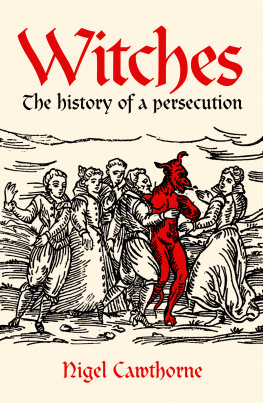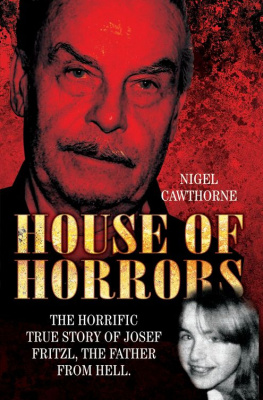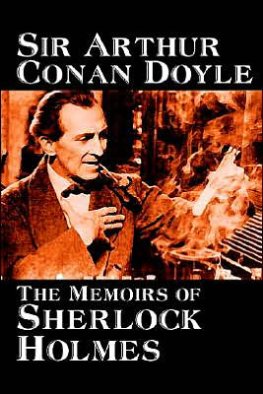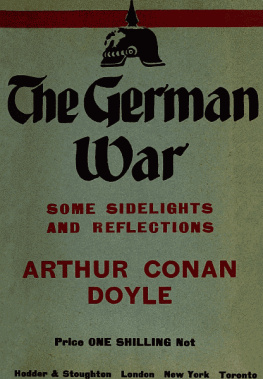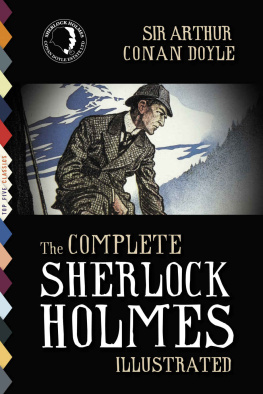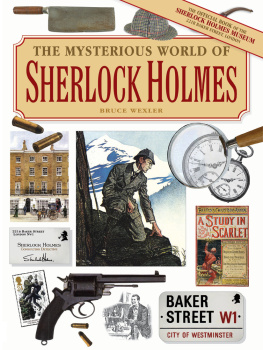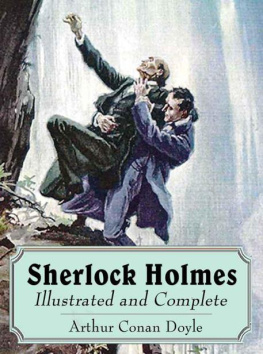Nigel Cawthorne is the author of A Brief History of Robin Hood and Jack the Rippers Secret Confession. His writing has appeared in over 150 newspapers, magazines and partworks from the Sun to the Financial Times, and from Flatbush Life to The New York Tribune. He lives in London.
Recent titles in the series
A Brief History of Roman Britain
Joan P. Alcock
A Brief History of the Private Life of Elizabeth II
Michael Paterson
A Brief History of France
Cecil Jenkins
A Brief History of Slavery
Jeremy Black
A Brief History of Robin Hood
Nigel Cawthorne
A Brief Guide to Angels and Demons
Sarah Bartlett
A Brief History of How the Industrial Revolution Changed the World
Thomas Crump
A Brief History of King Arthur
Mike Ashley
A Brief History of the Universe
J. P. McEvoy
A Brief Guide to Secret Religions
David Barrett
His Finest Hour: A Brief Life of Winston Churchill
Christopher Catherwood
A Brief History of Witchcraft
Lois Martin
A Brief History of France
Cecil Jenkins

Constable & Robinson Ltd
5556 Russell Square
WC1B 4HP
www.constablerobinson.com
First published in the UK by Robinson,
an imprint of Constable & Robinson, 2011
Copyright Nigel Cawthorne 2011
The right of Nigel Cawthorne to be identified as the author of this work has been asserted by him in accordance with the Copyright, Designs & Patents Act 1988.
All rights reserved. This book is sold subject to the condition that it shall not, by way of trade or otherwise, be lent, re-sold, hired out or otherwise circulated in any form of binding or cover other than that in which it is published and without a similar condition including this condition being imposed on the subsequent purchaser.
A copy of the British Library Cataloguing in Publication
Data is available from the British Library
UK ISBN 978-1-78033-012-9
eISBN 978-1-78033-156-0
1 3 5 7 9 10 8 6 4 2
First published in the United States in 2011 by Running Press Book Publishers, A Member of the Perseus Books Group
All rights reserved under the Pan-American and International Copyright Conventions
This book may not be reproduced in whole or in part, in any form or by any means, electronic or mechanical, including photocopying, recording, or by any information storage and retrieval system now known or hereafter invented, without written permission from the publisher.
Books published by Running Press are available at special discounts for bulk purchases in the United States by corporations, institutions, and other organizations. For more information, please contact the Special Markets Department at the Perseus Books Group, 2300 Chestnut Street, Suite 200, Philadelphia, PA 19103, or call (800) 810-4145, ext. 5000, or e-mail .
US ISBN: 978-0-7624-4408-3
US Library of Congress Control Number: 2011928224
9 8 7 6 5 4 3 2 1
Digit on the right indicates the number of this printing
Running Press Book Publishers
2300 Chestnut Street
Philadelphia, PA 19103-4371
Visit us on the web!
www.runningpress.com
Printed and bound in the UK
Introduction
The Brains of Baker Street
Created by Sir Arthur Conan Doyle in 1887, the great detective Sherlock Holmes appears in four novels and fifty-six short stories, which first appeared in serial form in monthly magazines. All but four are narrated by Holmess friend Dr John H. Watson.
Holmes was not the first detective in literature but he helped to establish the genre; from the beginning he had a huge following on both sides of the Atlantic. Sherlockians can now be found worldwide, and films and TV series are made about him to this day. Holmess use of deductive reason affected real-life policing and inspired future generations of fictional detectives. It could be argued that every literary, film or TV detective is a direct descendent of Sherlock Holmes.
But Holmes remains rooted in the late Victorian and Edwardian eras, when the British Empire was at its zenith and when London, then the biggest city in the world, was shrouded in pea-souper fogs caused by the burning of wood and coal for heating, cooking and industry. It was a world of hansom cabs and gaslight. Telephones were rare; most communication was by letter and telegram. The railway had opened up the countryside, yet it would be years until the suburbs on the Surrey side of the Thames would begin to sprawl.
At that time, London was a major port and from London Bridge eastwards there was a massive complex of docks with its attendant poverty, slums, opium dens and prostitution, which also flourished in the West End. At night it would have been almost impossible to drive down the quadrant at the end of Regent Street into Piccadilly Circus for the crowds of working women.
London was home to political dissidents and Jews seeking refuge from persecution on the Continent. A Fenian bombing campaign had ended in 1885, though Irish home rule remained a major political issue. The unification of Germany had already led to the Franco-Prussian war. Ocean liners had begun to make travel to America, South Africa, India and Australia commonplace. A transatlantic cable laid in 1866 and supplemented with new cables in 1873, 1874, 1880 and 1894 made it easy for Holmes to telegraph police departments across North America. The invention of the steam-driven press and the abolition of stamp duty (the tax on learning) in 1855 made newspapers and magazines cheap and plentiful. The London underground system was being built and the construction of the sewerage system began to eradicate cholera.
Holmes arrived on the literary scene just when London needed a real-life detective: Jack the Ripper stalked the streets in 1888, but Scotland Yard seemed more concerned with prosecuting the clients of the male brothel in Cleveland Street, raided in 1889, and Oscar Wilde, who was imprisoned in 1895.
Holmess last case is set in the year 1914. Conan Doyle had continued to publish the stories until 1927, but placed them in the era before the Great War swept away Holmess world forever.
Doyle did not like Holmes and thought his historical novels to be more important. He famously tried to kill off Holmes in 1893 by plunging him over the Reichenbach Falls with Professor Moriarty, but was forced revive him in 1901 with The Hound of the Baskervilles. It would be no more possible to kill Holmes now.
Nigel Cawthorne
Bloomsbury, 2011
Chapter 1
Sir Arthur Conan Doyle
At a dinner in the Balmoral Ballroom of Londons Trocadero on 28 September 1928, the creator of Sherlock Holmes, Sir Arthur Conan Doyle, complained that he suffered sometimes from some little confusion between the author and the character. He was, he said, more like Dr Watson, the fictional author of the Sherlock Holmes stories; however, according to psychologists, he noted, we are multiplex and conceded that there may be represented in my being some strand of Sherlock.
Arthur Ignatius Conan Doyle was born in Edinburgh on 22 May 1859. In 1820, his grandfather John Doyle had moved from Dublin to London, where he became a political cartoonist and a friend of the writers Charles Dickens, Walter Scott and William Makepeace Thackeray, the artist Edwin Landseer and the politician Benjamin Disraeli.
John Doyles surviving children inherited their fathers gift for the arts. But the youngest, Charles, lagged behind the others and moved to Edinburgh where he became a draughtsman in the Office of Works, though he continued to work as an artist and illustrator in his spare time. In Edinburgh he met Mary Foyle, whose widowed mother had been forced to move to the city from Kilkenny to escape the Potato Famine. They were married in 1855.
Next page


